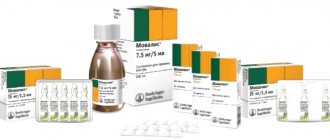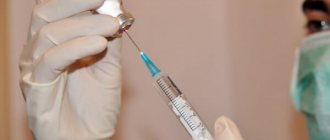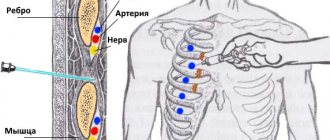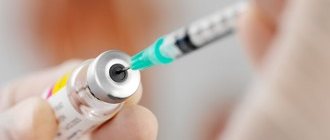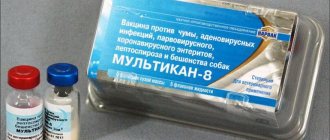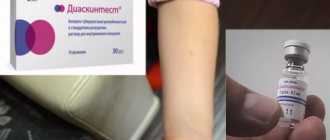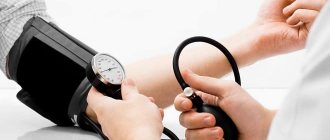Content:
- How to prepare for non-standard therapy
- Features of the treatment method
- Naltrexone is the active ingredient in anti-drug drugs.
- Side effects of naltrexone
- When treating drug addiction with one injection is impossible
- Benefits of treating drug addiction with injections
- Disadvantages of therapy
Is it possible to treat drug addiction with one injection?
This formulation of the question is more reminiscent of a PR stunt than a description of the actual methodology. Everyone knows how harmful psychoactive substances are and what sad consequences dependency on them can lead to. Getting rid of cravings for drugs is not easy. However, one should not think that curing a disease with an injection is unrealistic. This practice actually exists. Moreover, today it is in high demand among patients of private and public drug treatment centers, since it has proven itself to be effective and affordable.
How to prepare for non-standard therapy
For drug addiction to become a thing of the past, it must be treated correctly. The administration of a drug that relieves drug cravings is permissible only after a high-quality detox. This means that the patient is first offered to undergo infusion therapy. It lasts from one to several weeks - the exact period is determined by the “severity” of the surfactant taken and the length of the drug experience.
The patient is injected intravenously with detoxification solutions that cleanse the body of drug breakdown products, all kinds of toxins and poisons. If necessary, the drip includes drugs that improve the functioning of internal organs, improve cerebral circulation, and also sedatives.
Only when the withdrawal syndrome is left behind - the patient can survive for some time without drugs, without experiencing painful withdrawal symptoms - does the doctor carry out a medication coding.
How physiological dependence is formed
The development of drug addiction has complex biochemical and physiological mechanisms, since opioid analgesics disrupt the functioning of the most important biological substances - dopamine, serotonin, norepinephrine, endorphin, enkephalin, glutamic acid, gamma-aminobutyric acid and glycine. All these substances determine human behavior, his emotions, preferences and pleasure, are responsible for the processes of excitation and inhibition in the brain, for memory and attention. This is a delicate mechanism; if it is violated, serious consequences arise.
The central nervous and endocrine systems operate on the principle of negative feedback. For example, when a person takes testosterone in capsules for a long time, the body decides that it can not produce its own testosterone, since the hormone comes from the outside - testicular atrophy develops (they produce testosterone).
The same applies to brain neurotransmitters, which are responsible for pleasure, feelings of happiness and psychological comfort, joy and good mood. Regular non-medical use of narcotic analgesics, such as morphine and its synthetic and semi-synthetic analogues, leads to a severe deficiency of endorphin, dopamine, serotonin and enkephalin, since the body ceases to produce its own neurotransmitters.
When a person takes narcotic analgesics, the brain does not sense the deficiency of neurotransmitters. However, when the dose is reduced or not delivered at all, a crisis develops - a severe withdrawal syndrome, which occurs in response to a lack of endorphin and dopamine. And when a person stops consuming substances, the body requires the supply of opioid analgesics from the outside - a strong obsessive need for the drug arises. Thus, opioid analgesics are integrated into the internal regulatory system of opioid neurotransmitters and cause physiological dependence.
Features of the treatment method
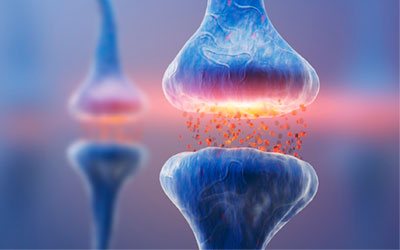
As a result, the patient cannot relax in the usual way. Even if he takes the drug, he will not get the expected effect. This leads to gradual withdrawal from the drug. How long the coding effect will last depends on the type of medication administered and its dose. Typically, a one-time injection cures for one to ten months. Then, if necessary, the injection is repeated.
What medicine is prescribed for coronavirus
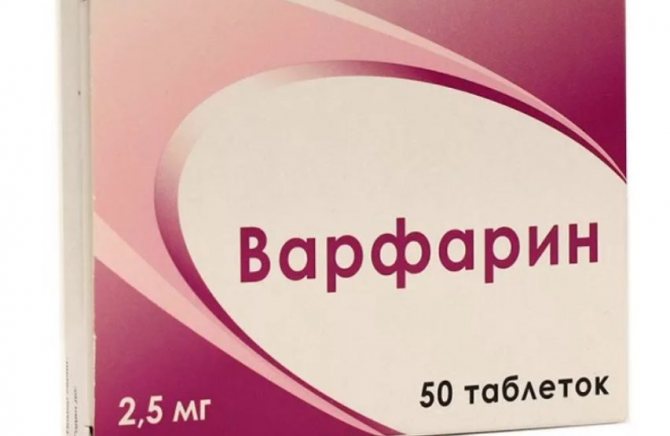
The choice of the required drug is dictated by practical and therapeutic considerations. Self-administration can be risky, even if a person buys an indirect anticoagulant. Some of them have an individually determined dosage, which is calculated based on body weight and test results. Stopping treatment can cause withdrawal syndrome, so it is carried out according to a special scheme, gradually minimizing the amount of the active substance that inhibits enzyme synthesis.
These include:
- Warfarin;
- Neodicoumarin;
- Sinkumar and other drugs with similar effects.
In hospital conditions, especially when it comes to saving a human life, low molecular weight heparins are used. They have a direct and rapid effect on the fluid connective tissue, ensuring the prevention of blood clots and the transport of necessary medications to the site of inflammation. These drugs include:
- Heparin;
- Clexane;
- Fraxiparine;
- Hirudin.
Which medicine for injections in the stomach for coronavirus is used in a particular hospital depends on its supply. The names may be different, but these are Heparin, heparinoids or Antithrombin concentrate.
Side effects of naltrexone
Naltrexone, like any other medicine, has certain side effects. Therefore, you need to use it responsibly. After drug administration, drug addicts sometimes experience:
- Pathologies of the central nervous system. This refers to dizziness, high irritability, hallucinations, nightmares, depression, paranoia, increased fatigue, drowsiness during daylight hours, tinnitus, discomfort in the eyes, and blurred vision.
After the injection, your appetite may decrease. Sometimes constipation, bloating occurs, and the mucous membranes of the oral cavity dry out. If you have hemorrhoids, the symptoms of the disease may worsen. An increase in the activity of liver transaminases is not excluded.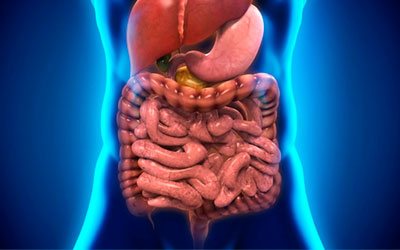
Disturbances in the activity of the gastrointestinal tract.- Diseases of the urinary system. More often they concern problems with urination or a decrease in the volume of urine produced.
- Decreased erection/fertility. The patient loses sexual desire or ceases to experience pleasant sensations during sexual intercourse. It also happens that libido, on the contrary, increases after encoding.
- Adverse dermatological reactions. The work of the sebaceous glands may increase. Then hyperhidrosis develops. In rare cases, changes characteristic of the first stage of frostbite are recorded on the skin (although there was no prolonged exposure to cold).
- Breathing disorders. Nosebleeds and swelling of the nasal mucous membranes are possible. The coded person feels a constant sore throat and suffers from an unproductive dry cough.
- Diseases of the cardiovascular system. Side effects of naltrexone include phlebitis, hypertensive crisis, severe edema, and tachycardia.
In the first days after coding, the drug addict may experience pain in the groin area, a feeling of heat, and swollen lymph nodes. As a rule, these symptoms go away on their own and do not require medical correction.
Composition and pharmaceutical form
The active substance of the drug is lornoxicam, which belongs to the group of non-steroidal anti-inflammatory drugs. The drug has a pronounced analgesic effect without affecting the thermoregulation centers and the cardiovascular system.
Xefocam is produced in the form of a lyophilized powder, soluble in water. The light yellow dense mass is packaged in dark glass bottles. One dose of the drug contains 8 mg of lornoxicam and stabilizing additives, including mannitol, trometamol. When combined with a liquid, the drug is converted into a homogeneous colored solution.
The injections are intended for parenteral administration: intravenously and intramuscularly. One cardboard package of Xefocam contains 5 bottles of lyophilized dry mass.
When treating drug addiction with one injection is impossible
Patients will not be able to cure drug addiction with one injection:

- who have individual intolerance to any of the compounds included in the coding drug;
- with progressive withdrawal syndrome;
- taking drugs that are not classified as opiates.
Also, the technique is not suitable for pregnant and lactating women, patients under 18 years of age. It should be used with caution by people with kidney and liver disease.
Benefits of treating drug addiction with injections
There is no need to treat drug addiction treatment as a panacea. For this method of treatment to help, the patient must undergo long-term rehabilitation in a specialized center after coding. It is important to address both the physical and psychological components of addiction.
Among the advantages of treating drug addiction with injections:
- highly effective in combating addiction to all types of opiate drugs;
- restoration of full functioning of the body;
- absence of withdrawal syndrome after stopping the use of the coding drug;
- the encoding effect extends to alcohol - during the recovery period, a drug addict will not be able to relax even with the help of alcohol-containing compounds;
- creating conditions for long-term remission.
In most cases, injections for drug addiction are well tolerated by patients and do not cause dangerous side reactions. This allows us to talk about them as a safe program for overcoming drug addiction.
Disadvantages of therapy
There are few downsides to the treatment. This is the risk of side effects and changes in the emotional state of the patient. Let's look at the last factor in more detail.

The most common complication of naltrexone coding is a high level of irritability. The drug addict becomes nervous and often quarrels with others. Sometimes he behaves inappropriately to the current situation. But here it is important to understand that such negative changes are not necessarily associated with the effect of the drug.
Very often the patient becomes nervous due to the inability to lead a normal lifestyle. He is irritated by the very fact that further drug use is pointless. He doesn’t know what to do with himself or how to properly communicate with others.
It is important for the patient to enlist the support of a qualified psychologist. A specialist will help you see the joyful moments of a healthy lifestyle and increase your motivation for recovery. Thanks to this, the addict will become less painful about changes.
Pain relief by injection
The peculiarity of all painkillers is that they do not affect the cause of pain, but only eliminate it. Therefore, they are used for symptomatic auxiliary treatment. Usually, painkillers in tablets or ointments are used at home, but severe pain can only be relieved with injections. This method of pain relief has advantages:
- the drug begins to act quickly, alleviating the patient’s condition;
- fewer side effects;
- easier to dose.
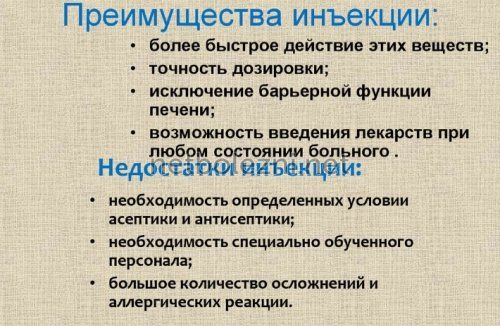
Medicines are usually administered intramuscularly - into the gluteal muscle, less often injections are given intravenously or intraarticularly. As a last resort, you can give an injection in the leg or shoulder.
Literature:
- Methodology for the formation of a “restraining factor” in the treatment of heroin addiction using implants containing naltrexone: a manual for doctors / A. V. Kulagin; Non-profit foundation "Renaissance", Clinic of Nervous Diseases of Dr. Kulagik. — Kazan: IPC Express Format, 2010. — 52 p.
- Theoretical models of the formation, control and correction of drug use: / Tsvetkova L. A. et al. - St. Petersburg: St. Petersburg University Publishing House, 2006 (St. Petersburg: Type. St. Petersburg State University Publishing House). — 258 p.
- Psychotropic drugs: reference book. practicing physician / F. Bochner et al.; scientific ed. rus. ed. Yu. A. Alexandrovsky; lane English A. N. Redkin. - Moscow: Litterra Publishing House, 2006. - 292 p.
